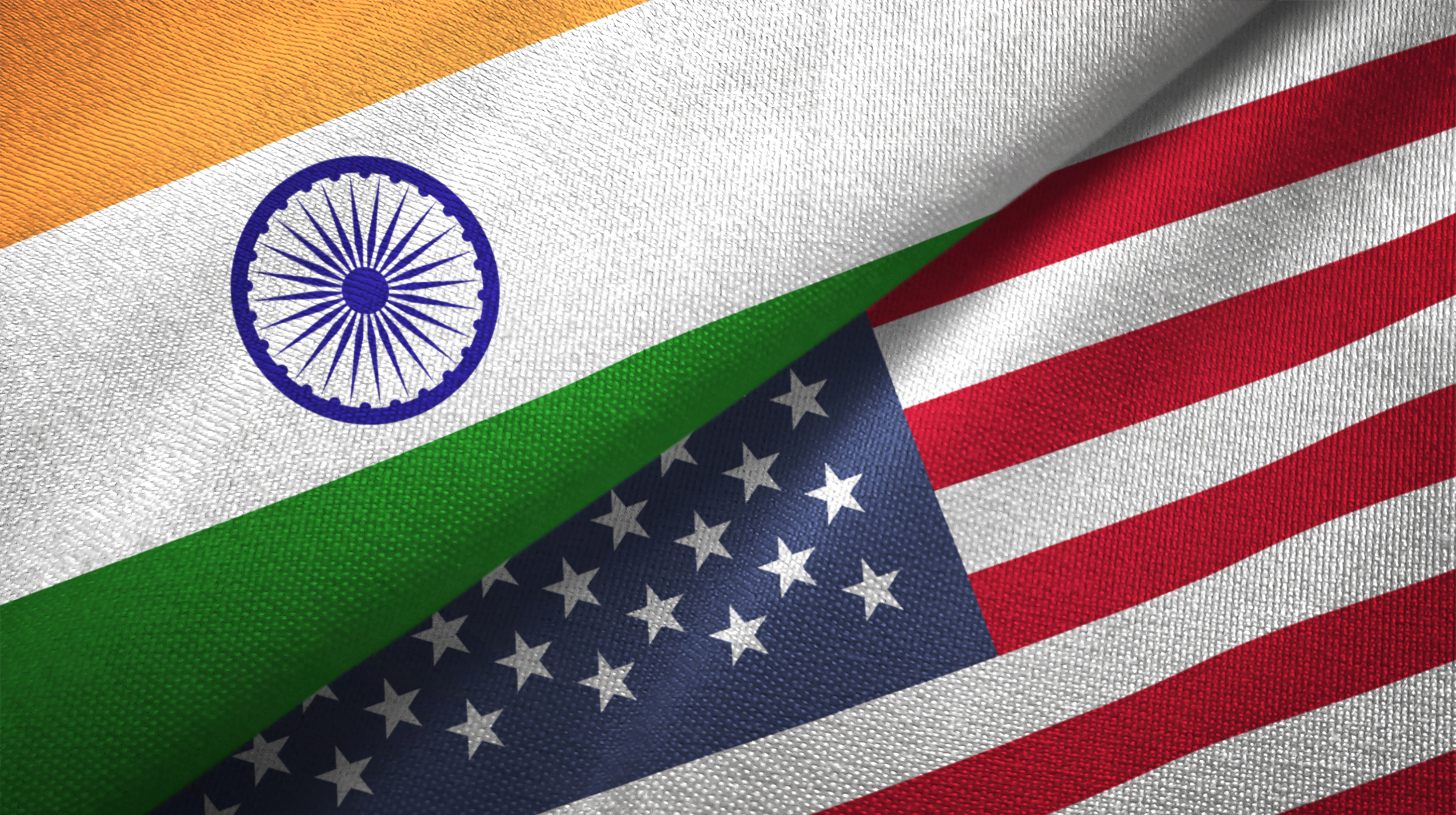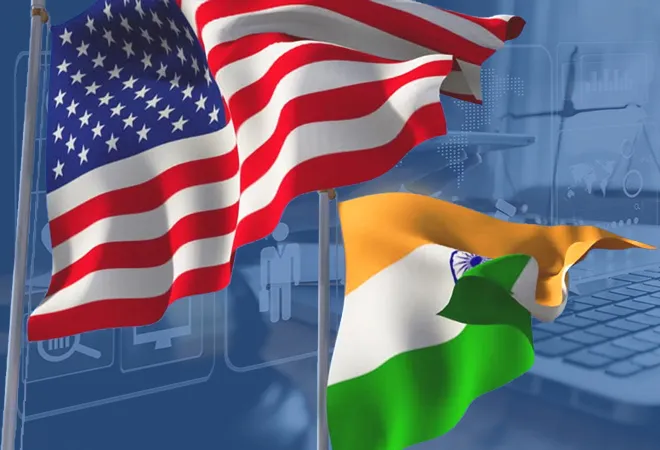Is China Actively Thwarting Foxconn’s Move to India?
India’s Moment: How the World’s Next Manufacturing Superpower Can Rise—And Why America Must Help
For decades, China has held the title of “the world’s factory.” But change is in the air. As geopolitical tensions rise and global supply chains seek resilience over cost alone, India finds itself at a historic crossroads. The opportunity to become the primary global manufacturing hub, the country that fills Walmart shelves, builds the phones in American hands, and powers the next industrial wave—is real. But seizing it will require vision, partnership, and a new kind of leadership.
The Fall of the Old Factory Order
China’s low-cost manufacturing engine is sputtering. Wages have risen significantly—according to recent data, China’s average manufacturing labor cost now exceeds $6.50/hour, compared to India’s $1.50/hour. That differential is no longer marginal—it’s decisive.
Meanwhile, robotics and automation, though advancing fast, are not yet ready to fully replace human hands on a massive, flexible scale. You can’t automate the assembly of hundreds of millions of low-margin products profitably just yet—not at the scale required. And even where robotics plays a role, it still needs skilled, semi-skilled, and supervisory human labor. India has the population and the demographic dividend to deliver.
Why India, Why Now?
India offers the perfect blend of conditions that made China dominant in the 1990s and early 2000s—but with an added twist:
-
Massive, young workforce: Over 500 million working-age Indians under 35.
-
Competitive wages: Among the lowest in major economies.
-
Democratic institutions: Unlike China’s opaque bureaucracy, India is open and accountable.
-
Strategic location: Positioned to serve both East and West efficiently.
-
Digital backbone: India’s fintech and digital identity stack (like UPI and Aadhaar) are world-leading.
-
PLI incentives: India is investing billions through Production-Linked Incentive schemes to attract global manufacturers.
Yet the path is not automatic. India must make the next leap: from a low-cost labor pool to a high-efficiency industrial ecosystem.
Enter the US: Partner or Bystander?
The United States has long sought to "bring manufacturing back home." But the brutal reality is: you can’t rebuild with 50-year-old factories or legacy labor models. You need factories of the future—and they need to be part of a global ecosystem, not an isolated island.
That’s where India comes in.
If the U.S. truly wants resilient, tech-enabled manufacturing that can stand up to Chinese dominance, it must treat India as its equal, its partner, and its #1 industrial ally.
Not a junior partner.
Not a strategic afterthought.
But as the bedrock of a new global supply chain that stretches from Mumbai to Memphis, Bengaluru to Boston.
How It Becomes Win-Win
-
Robotics + Labor = Scalable Innovation: The U.S. leads in advanced robotics. India leads in labor. Together, they can build hybrid factories—robot-assisted, worker-run—faster, cheaper, and smarter than either country can do alone.
-
Resilient Supply Chains: Diversifying away from China reduces dependency on a single point of failure. With India as the manufacturing hub, the U.S. gains more control over vital inputs, semiconductors, electronics, and pharmaceuticals.
-
Made in India, Sold in America: India can manufacture cost-effectively for American brands. Think of it as the factory floor for America’s retail economy.
-
Manufacturing Jobs in America: Yes, Indian labor is cheaper. But high-end, roboticized manufacturing done in India can create design, robotics, software, engineering, and supply chain jobs in the U.S.—the new collar economy.
What India Must Do
To become the world’s next manufacturing superpower, India must act boldly:
-
Invest in industrial infrastructure: Power, ports, highways, and rail must keep up with demand.
-
Upskill its workforce: From machine operators to quality engineers, training programs must scale.
-
Simplify regulations: Bureaucracy still slows things down. A single-window clearance for industrial projects is essential.
-
Build smart factories: Partner with American robotics companies to deploy the next generation of AI-driven, IoT-enabled plants.
-
Ensure labor rights and compliance: To win global trust, India must maintain ethical standards in working conditions, sustainability, and wages.
What the US Must Do
If America wants to pivot away from Chinese manufacturing and build a more secure economic future, it must:
-
Support tech transfer and joint ventures with Indian firms.
-
Relax export restrictions on manufacturing hardware and robotics.
-
Invest in infrastructure projects in India through agencies like the U.S. International Development Finance Corporation (DFC).
-
Include India in all major trade and tech alliances, from Indo-Pacific frameworks to AI and semiconductor consortia.
-
Stop seeing India merely as a software hub and start recognizing it as a hardware superpower in the making.
Conclusion: A New Factory Order
The world is ready for a new factory of the future—not built on low wages and endless exports, but on technology, trust, and transformation. India, with the right support and strategic partnership, can be that factory. The U.S., if it wakes up to this moment, can benefit immensely—not just through cheaper goods, but through a stronger, more democratic, and resilient global economy.
This is not about replacing China overnight. It’s about building something better—something more balanced, more distributed, and more aligned with democratic values.
India’s rise is not inevitable—but it is possible.
America’s support is not charity—it is strategy.
If they move together now, both can shape a new industrial age that benefits billions. The shelves of Walmart, the servers of Silicon Valley, and the strength of democratic supply chains all hang in the balance.
भारत का मौका: क्या यह देश बन सकता है दुनिया का अगला निर्माण महाशक्ति?
पिछले कई दशकों से चीन को "दुनिया की फैक्ट्री" कहा जाता रहा है। लेकिन अब हालात बदल रहे हैं। जैसे-जैसे भू-राजनीतिक तनाव बढ़ रहे हैं और वैश्विक आपूर्ति श्रृंखलाएं केवल लागत नहीं, बल्कि लचीलापन भी चाहती हैं—भारत खुद को एक ऐतिहासिक चौराहे पर खड़ा पा रहा है।
दुनिया की प्राथमिक निर्माण शक्ति बनने का अवसर—वह देश जो वॉलमार्ट की शेल्फ़ें भरता है, जो अमेरिकी हाथों में मौजूद फ़ोन बनाता है, और जो अगली औद्योगिक क्रांति को गति देता है—यह अवसर साकार हो सकता है। लेकिन इसके लिए दूरदर्शिता, साझेदारी और नेतृत्व की जरूरत होगी।
पुराने औद्योगिक युग का अंत
चीन की कम-लागत निर्माण प्रणाली अब टिकाऊ नहीं रही है। आंकड़ों के अनुसार, चीन में औसत निर्माण मजदूरी $6.50 प्रति घंटा से अधिक हो गई है, जबकि भारत में यह लगभग $1.50 प्रति घंटा है। यह अंतर अब मामूली नहीं, बल्कि निर्णायक है।
दूसरी ओर, रोबोटिक्स और ऑटोमेशन अब भी उस स्तर तक नहीं पहुंचे हैं जहाँ वे लचीले पैमाने पर इंसानी श्रम की जगह पूरी तरह ले सकें। कम लागत वाले उत्पादों की विशाल मात्रा का उत्पादन अभी भी मानव श्रमिकों के बिना संभव नहीं है। और जहाँ रोबोट हैं, वहाँ भी इंसानी निगरानी और संचालन की आवश्यकता है। इस संदर्भ में भारत के पास पर्याप्त जनसंख्या और युवाशक्ति है।
क्यों भारत, और क्यों अभी?
भारत के पास वे सभी गुण हैं जिन्होंने 1990 और 2000 के दशक में चीन को निर्माण महाशक्ति बनाया—लेकिन कुछ अतिरिक्त लाभों के साथ:
-
बड़ी और युवा कार्यशक्ति: 500 मिलियन से अधिक भारतीय 35 वर्ष से कम उम्र के हैं।
-
कम लागत वाली मजदूरी: वैश्विक औसत से काफी सस्ती।
-
लोकतांत्रिक संस्थाएँ: पारदर्शी और उत्तरदायी शासन व्यवस्था।
-
रणनीतिक स्थान: पूर्व और पश्चिम दोनों की आपूर्ति के लिए उपयुक्त।
-
डिजिटल आधारभूत ढांचा: UPI और आधार जैसी तकनीकों से विश्व में अग्रणी।
-
PLI योजनाएँ: सरकार ने भारी सब्सिडी और प्रोत्साहन योजनाएँ शुरू की हैं।
अब भारत को अगली छलांग लगानी होगी: एक सस्ते श्रम केंद्र से एक दक्ष और अत्याधुनिक औद्योगिक पारिस्थितिकी तंत्र में बदलने की छलांग।
अमेरिका की भूमिका: साझेदार या दर्शक?
अमेरिका वर्षों से "निर्माण को घर वापस लाने" की बात करता रहा है। लेकिन सच्चाई यह है कि 50 साल पुराने कारखानों और पुरानी श्रमिक व्यवस्था के सहारे यह संभव नहीं है। भविष्य के कारखानों के लिए नई तकनीक, वैश्विक सहयोग और चतुर रणनीति चाहिए।
और यहीं पर भारत की भूमिका आती है।
अगर अमेरिका वास्तव में चीन पर निर्भरता कम करना चाहता है और तकनीकी उत्पादन में खुद को मजबूत बनाना चाहता है, तो उसे भारत को समान, संपूर्ण और नंबर एक रणनीतिक साझेदार की तरह देखना होगा।
न कोई छोटा भाई।
न कोई बैकअप प्लान।
बल्कि एक नई वैश्विक आपूर्ति श्रृंखला का स्तंभ, जो मुंबई से मेम्फिस तक, बेंगलुरु से बोस्टन तक फैला हो।
यह कैसे हो सकता है Win-Win
-
रोबोटिक्स + श्रम = स्केलेबल नवाचार: अमेरिका रोबोटिक्स में अग्रणी है, भारत श्रम में। दोनों मिलकर ऐसे कारखाने बना सकते हैं जो तेज़, सस्ते और बुद्धिमान हों।
-
लचीली आपूर्ति श्रृंखला: चीन पर एकल निर्भरता को समाप्त कर, भारत को प्रमुख आपूर्तिकर्ता बनाने से वैश्विक जोखिम घटता है।
-
भारत में निर्माण, अमेरिका में बिक्री: भारत अमेरिकी ब्रांड्स के लिए सस्ते में निर्माण कर सकता है। यानी यह अमेरिकी खुदरा अर्थव्यवस्था की फैक्ट्री बन सकता है।
-
अमेरिका में नई नौकरियाँ: भारत में रोबोट-आधारित निर्माण से अमेरिका में डिज़ाइन, इंजीनियरिंग, लॉजिस्टिक्स और सप्लाई चेन की नौकरियाँ बढ़ेंगी।
भारत को क्या करना होगा
अगर भारत को "दुनिया की निर्माण राजधानी" बनना है, तो उसे बड़े कदम उठाने होंगे:
-
औद्योगिक बुनियादी ढाँचे में निवेश: बिजली, पोर्ट, हाईवे और रेलवे को दुरुस्त करना होगा।
-
कौशल विकास: मशीन ऑपरेटरों से लेकर गुणवत्ता इंजीनियरों तक, सभी को प्रशिक्षण देना होगा।
-
नियामक प्रणाली को सरल बनाना: निवेशकों को तेज़ मंजूरी मिले, इसके लिए एकल खिड़की प्रणाली जरूरी है।
-
स्मार्ट फैक्ट्रीज़ का निर्माण: अमेरिकी रोबोटिक्स कंपनियों के साथ साझेदारी कर AI और IoT युक्त कारखाने बनाना होंगे।
-
श्रमिक अधिकारों की रक्षा और अनुपालन: वैश्विक विश्वास जीतने के लिए भारत को अच्छे श्रम मानकों और टिकाऊ निर्माण सुनिश्चित करना होगा।
अमेरिका को क्या करना चाहिए
यदि अमेरिका वाकई निर्माण को मजबूत करना चाहता है, तो उसे चाहिए कि वह:
-
तकनीकी हस्तांतरण और संयुक्त उद्यमों को बढ़ावा दे।
-
रोबोटिक्स व हार्डवेयर निर्यात पर प्रतिबंधों में ढील दे।
-
भारत में इंफ्रास्ट्रक्चर परियोजनाओं में निवेश करे, विशेष रूप से DFC जैसी संस्थाओं के माध्यम से।
-
भारत को सभी प्रमुख व्यापार और तकनीकी गठबंधनों में शामिल करे।
-
भारत को केवल सॉफ्टवेयर देश न माने, बल्कि उसे हार्डवेयर महाशक्ति बनने दे।
निष्कर्ष: एक नए औद्योगिक युग की ओर
दुनिया अब नए प्रकार की फैक्ट्री चाहती है—ऐसी जो केवल सस्ती न हो, बल्कि तकनीकी, पारदर्शी और लोकतांत्रिक मूल्यों पर आधारित हो। भारत, यदि वह साहसिक निर्णय ले और अमेरिका साझेदारी करे, तो वह फैक्ट्री बन सकता है।
यह चीन को तुरंत हटाने की बात नहीं है, बल्कि कुछ बेहतर बनाने की बात है—कुछ ऐसा जो अधिक संतुलित, अधिक वितरित और वैश्विक विश्वास पर आधारित हो।
भारत का उत्थान अनिवार्य नहीं है—लेकिन संभव है।
अमेरिका का समर्थन अनुदान नहीं है—यह रणनीति है।
अगर दोनों अभी साथ आएँ, तो वे एक ऐसा औद्योगिक युग बना सकते हैं जो अरबों लोगों के लिए समृद्धि लाएगा।



